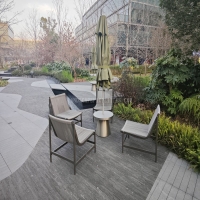Welcome to the website for landscape facilities products and knowledge.
Are there any recommended placement guidelines to avoid damage from sprinklers or water sources?
Proper sprinkler placement is crucial for maintaining both your landscape's health and your property's structural integrity. Many homeowners unknowingly position sprinklers in ways that can cause significant water damage to building foundations, exterior walls, and valuable landscaping features. The fundamental principle involves directing water away from structures while ensuring adequate coverage for vegetation.
For optimal protection against water-related damage, position sprinkler heads at least 12-18 inches away from building foundations, retaining walls, and wooden structures. This distance prevents constant moisture exposure that can lead to foundation cracks, wood rot, and mold growth. When installing near sidewalks or driveways, angle spray patterns to minimize water runoff onto paved surfaces, which reduces slipping hazards and water waste.
Consider your landscape's slope and soil composition when planning sprinkler placement. On inclined surfaces, position sprinklers at higher elevations to prevent excessive water flow toward structures below. For clay-heavy soils that absorb water slowly, use sprinklers with lower precipitation rates or implement cycle-and-soak programming to avoid runoff.
Regular maintenance plays an equally important role in damage prevention. Inspect sprinkler heads monthly for misalignments, blockages, or damage that could cause water to spray directly onto structures. Adjust heads seasonally to account for plant growth and changing sun angles. During winter in freezing climates, properly winterize systems to prevent pipe bursts that could lead to interior water damage.
Smart irrigation technology offers additional protection through moisture sensors and weather-based controllers that automatically adjust watering schedules based on actual conditions. These systems prevent overwatering, which is a common cause of water damage in landscaped areas.
By implementing these placement guidelines and maintenance practices, you can create an efficient irrigation system that nourishes your landscape while safeguarding your property from potential water damage. Remember that local building codes may have specific requirements for sprinkler placement near structures, so always consult with professional landscapers or irrigation specialists for site-specific recommendations.
Related search:

Recommendation
Metal structure rattan chair without armrests for single person, with woven seat and backrest.